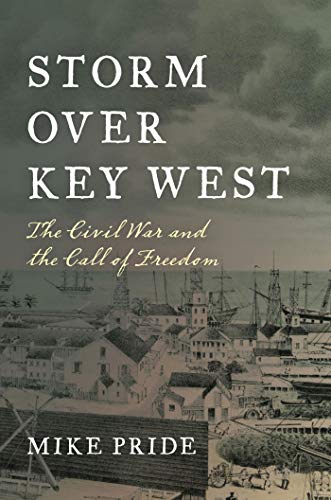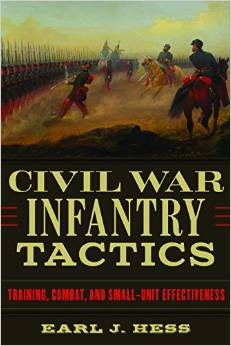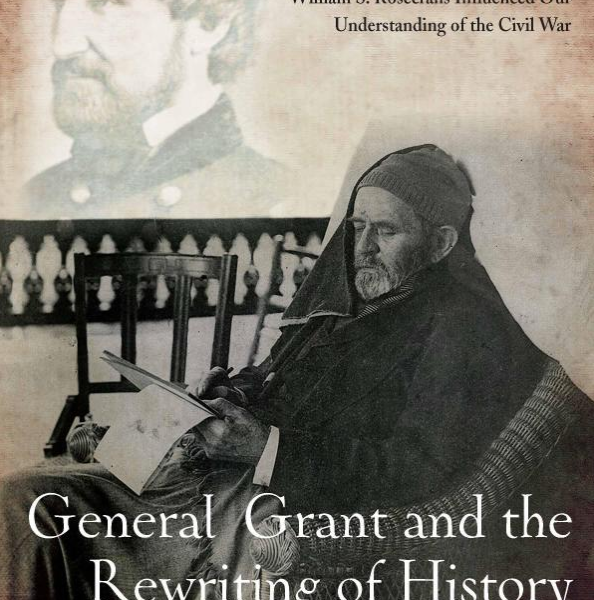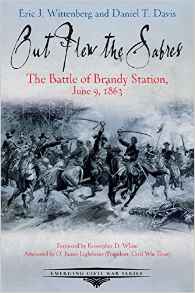Phantoms of the South Fork: Captain McNeill and His Rangers by Steve French. Kent State University Press, 2017. Cloth, ISBN: 978-1-60635-309-7. $39.95.
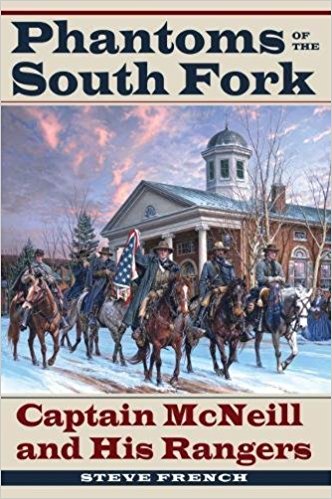 In this narrative history, Steve French sheds light on an understudied Confederate partisan ranger unit: John and Jesse McNeill’s Rangers. Citing an impressive array of sources, French examines this unit’s contributions to the Confederate war effort and to the Civil War’s trajectory. While this work constitutes a needed addition to the conflict’s military and social history, its main weakness is an insufficient analysis of soldier motivations.
In this narrative history, Steve French sheds light on an understudied Confederate partisan ranger unit: John and Jesse McNeill’s Rangers. Citing an impressive array of sources, French examines this unit’s contributions to the Confederate war effort and to the Civil War’s trajectory. While this work constitutes a needed addition to the conflict’s military and social history, its main weakness is an insufficient analysis of soldier motivations.
French thoroughly documents the careers of those who served in McNeill’s Rangers. Taking inspiration from the American Revolution’s southern irregulars, the controversial 1862 Partisan Ranger Act placed unconventional combatants like McNeill’s men within a formal system under War Department regulation. In September 1862, the young company, recruited from Hardy and Hampshire Counties in western Virginia, began its raiding campaign. The rangers targeted Union military personnel, communication lines, and supply trains. McNeill’s men enjoyed ambushing the enemy and capturing soldiers, generals, former slaves, horses, weapons, and equipment. Their main area of operations comprised the border region of West Virginia, Virginia, and Maryland. Despite this information, French neglected to address the Rangers’ socioeconomic backgrounds and why they supported the Confederacy.
French proves his argument that due to their successes, McNeill’s Rangers deserve to share attention with more famous irregulars, especially John Mosby’s Rangers. He makes clear that from 1862 on, McNeill’s partisan unit developed a reputation for constantly defeating Union forces in lopsided fashion. These victories won praise from the Confederate press, government, and high command. McNeill’s Rangers became such a menace to the Union Army that the latter expressed fear and frustration, and circulated false rumors about the unit’s activities and whereabouts.
Another of French’s strengths is his coverage of the counter-irregular raids against McNeill’s Rangers. To the Yankees, McNeill’s men were not soldiers, but criminals. Counter-irregular units included Captain T.W. Kelley’s Tigers (a Union partisan ranger command), the U.S. Army’s northern and West Virginian cavalrymen, and Ohio National Guardsmen. Generals George McClellan, Ben Kelley, and Phil Sheridan often dispatched scouts to hunt down the elusive partisans and to protect the Baltimore & Ohio Railroad. French explores the Rangers’ rivalry with the “Swamp Dragons,” Unionist home guards in West Virginia who waged their own irregular war against Confederates. Other regular and irregular rebels collaborated with the Rangers. To promote their authority in contested territory, both armies seized or damaged property, regulated political loyalties, and harassed or murdered citizens. Likewise, civilians assisted friendly troops with food, medical care, and intelligence. The staunch Unionism of Morgantown caused one Ranger to designate it, “the meanest place in Virginia” (39). French thus captures how McNeill’s men participated in a brutal inner civil war in the three-state border area.
An intriguing part of French’s work is how the author, like other recent scholars, shows that Civil War irregulars often underwent numerous changes in their status. Soon after its formation as an independent company, in late September 1862, the Rangers became absorbed into Imboden’s partisan ranger battalion. A majority of Imboden’s men later voted to become a regular brigade, with the McNeill company maintaining its partisan status. While Imboden eventually resumed command over the company and the Rangers scouted for General Robert E. Lee, McNeill’s men temporarily conducted autonomous raids. French notes that as they raised hell during one raid, a Ranger declared that, “we are independent and come and go where and when we please” (52). General Lee once expressed a preference that they become fully conventional cavalrymen (64-65). Reflecting this sentiment, by 1864, partisan rangers engaged in such indiscriminate violence, banditry, and desertion that the Confederate government disbanded every unit except Mosby’s and McNeill’s Rangers. In January 1865, McNeill’s men rejected Colonel Harry Gilmor’s attempt to assume formal command over them. However, lacking deeper analysis, French leaves numerous questions unanswered: Why did the Rangers cherish the independence of partisan ranger service? Why did they accept the authority of most Confederate commanders, but not Gilmor?
French amasses a solid collection of sources. With wartime correspondence and postbellum memoirs, he vividly highlights the ordeals of his subjects. Giving us a sense of what a McNeill attack sounded like, French cites a woman who deemed the Rebel Yell “a most awful scream” (158). French also makes exceptional use of newspapers like the Rockingham Register, which measured Confederate popular opinion.
Despite some flaws, French’s book shows that McNeill’s Rangers deserve greater attention in research on irregular warfare during the Civil War. He provides a needed look at partisans whose importance rivals that of Mosby’s Rangers. His work should appeal to both scholarly and popular audiences interested in irregular warfare.
Scott Thompson is a PhD candidate at West Virginia University. He is currently working on a dissertation on black soldier mutinies and contributed an essay for Barton Myers and Brian McKnight, eds., The Guerrilla Hunters (2017).

